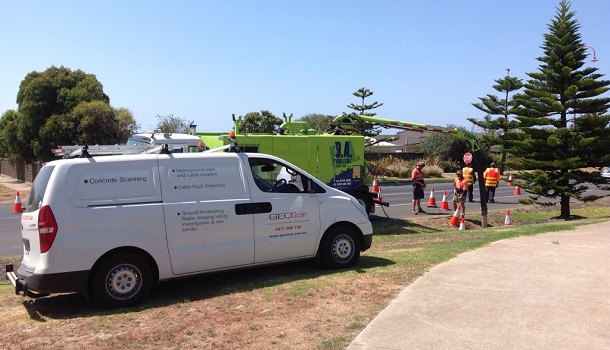
You'll be surprised to know that underneath your feet, there's a massive network of cables, pipes and other conduits carrying gas, electricity, water and digital information. This labyrinth of underground utilities plays an essential role in fuelling our life quality. Having an in-depth understanding of their location before excavation can avoid utility outages and prevent damages. While underground cable locating services is certainly not a new industry, there are many misconceptions floating amongst the people.
Let's debunk seven most common myths associated with underground utility and pipe locating services:
Myth 1: All my underground utilities will be marked by private locators
When you hire the private utility and pipe locating service provider, you presume that they will mark all the utilities and your place will be safe for excavation. However, though private locators leave no stone unturned to locate and map all the relevant underground utilities, you need to know that there isn't any assurance that all your utilities are marked and located. Every technology, including ground penetrating radar (GPR) has certain limitations. The best way is to be cautious and execute safe excavation.
Myth 2: I can ease off and relax till the underground cable locating service provider come
That's not true. When you order utility locating service, there are few things that you need to do before they come in. It includes:
- Ensure that the survey area is free of obstacles such as cars, construction material, etc.
- Check that there' access to area which needs to be mapped.
- If there are any utilities secured by fences or are locked, prearrange and ensure that they are accessible.
- Try to get previous utility or pipe locating records, etc
Myth 3: Utility locating & mapping is accurate
Here you need to take into account that the markings might not be precise. Even the most advanced technologies could fail to deliver accurate results. Regardless of the precision and cutting-edge technology of ground penetrating radar and other pipe locating equipment, they do have certain limitations. Also, remember that the readings taken are the mere interpretations of the operator. When you are performing excavation, try to conduct it at-least 4-5 feet away from the marked lines.
Myth 4: There are no underground utilities shown in the utility map of my excavation area, so I don't require any locators.
We often end up believing that past records are seldom complete and to the date. But, unfortunately, that's a mere misconception. Many providers of underground utility locating services have shared that while conducting utility locating and mapping service, they often detect the underground utilities which were previously undetected. It's rarely a case, where you find the only utilities mentioned in the previous records and utility maps.
Myth 5: Utilities which are non-metallic cannot be detected
Though GPR cannot see all the utilities, it could still be beneficial in locating non-metallic utilities in favourable subsurface conditions. Plus, if the access permits, a metallic trace wire can be inserted into the conduit pipe which is hollow, making it easier to trace the utilities with the help of a cable or pipe locating equipment.
Myth 6: All the underground utilities can be seen through Ground Penetrating Radars
Ground penetrating radar (GPR) equipment cannot see all the utilities lying underneath by its own. It's a geophysical method that employs radar pulses and it comes with its own constraints. Especially in subsurface conditions, GPR has these two major limitations.
- Penetration depth Limitations
- Difficulties in data interpretation
Myth 7: Once utility mapping is done; you don't require doing it for future projects.
Underground utility locating or pipe locating is an on-going process. The depth of pipelines, fiber cables and other utilities can change over the course of time due to natural forces, such as dirt moving or erosion. Or perhaps new utilities might be installed after your last locating execution. Ensure that you don't make any uncertain assumptions. You don't want to endanger the lives and resources of others.
Final Thoughts
These seven myths are just the few of the many reasons known for not calling Dial Before You Dig Locators. The fact is, underneath ground lies buries pipes and cables and if any of these is struck can lead to severe consequences. Thus, it's wise and safe to always call Dial Before You Dig and licensed pipe locators to get your underground utilities located and mapped before you excavate.